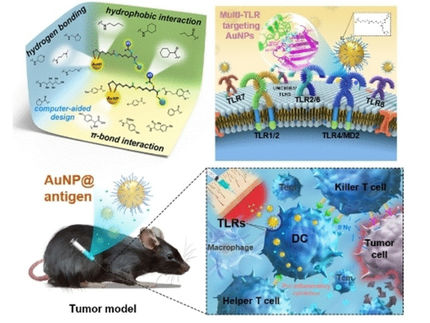Genetic vaccine promising against chronic hepatitis C
A potential vaccine candidate against chronic hepatitis C (HCV) infections is presented in a thesis from Karolinska Institutet. The new genetic vaccine can activate immune responses that are needed to clear HCV, a disease that today is difficult to treat effectively.
The hepatitis C virus (HCV) is a major cause of chronic liver disease worldwide. It is estimated that HCV affects approximately 170 million people around the world. Today, no vaccine is available to prevent or cure HCV infections. Antiviral therapy is used quite effectively, but in 60-80 per cent of the patients become chronic carriers of the virus in their liver. One feature of HCV infection is the high rate of viral persistence. The mechanism of viral persistence is largely unknown, although the high genetic variability is thought to play a key role.
In Lars Frelin's thesis the HCV NS3 protein is studied in detail since it performs key functions in the viral life cycle. These are unwinding and strand separation of the viral RNA and proteolytic processing of the precursor polyprotein. To obtain the complete protease the NS4A co-factor was included in the NS3-based vaccines. NS4A has been shown to enhance the stability of NS3 and to target the NS3/4A complex to intracellular membranes. The latter is most likely of importance for the formation of the replication complex. Also, the NS3 region has a limited genetic variability and several studies have now demonstrated that NS3-specific CD4+ and CD8+ T-cell responses are crucial for the resolution of HCV infections. Thus, several factors suggest that the NS3 region should be well suited for vaccine development.
The results show that HCV NS3-based genetic vaccines effectively primed both humoral and cellular immune responses in mice. NS3/4A was shown to prime a Th1 CD4+ T-cell response. The inclusion of NS4A in NS3-based vaccines primed antibody, CD4+, and CD8+ T-cell responses that were superior to those primed by NS3-gene alone. Thus, NS4A enhanced the immunogenicity of NS3. The studies also show that enhancement of the immunogenicity was most probably a result of the higher expression levels of NS3 generated by the inclusion of NS4A. Further results show that the overall immunogenicity of NS3/4A could be further enhanced by codon optimization or by mRNA amplification using the Semliki forest virus (SFV) replicon. The NS3 protein expression levels were further improved by either codon optimization and mRNA amplification. Subsequently, both these modifications enhanced the NS3-specific immune responses. One concern in development of genetic vaccines is that the gene displays unwanted properties when expressed in vivo. Therefore, a new transgenic mouse expressing the HCV NS3/4Aprotein in the liver was generated. The protein expression was restricted to the liver to mimic the in vivo situation during a HCV infection. Protein expression was localized to the cytoplasm of the hepatocytes and displayed a similar staining pattern as seen in hepatocytes from HCV infected individuals. The intrahepatic protein expression did not cause overt liver damage, except for a slight enlargement of the liver. However, the NS3/4A-transgenic mice displayed less spontaneously appearing intrahepatic inflammatory foci, which are commonly found in laboratory mice. Thus, expression of NS3/4A-protein may affect the distribution of immune cells within the liver.
The present studies demonstrate that NS3/4A-based genetic vaccines effectively prime humoral and cellular immune responses. Intra-hepatic expression of NS3/4A did not cause any spontaneous liver disease or overt pathology suggesting that it safely can be used in genetic vaccines. Thus, the NS3/4A gene can safely activate immune responses that are similar to those found in humans who can clear HCV. The NS3/4A should therefore be a potential vaccine candidate against chronic HCV infections.
Topics
Organizations
Other news from the department science
These products might interest you

Hydrosart® Ultrafilter by Sartorius
Efficient ultrafiltration for biotech and pharma
Maximum flow rates and minimum protein loss with Hydrosart® membranes

Hydrosart® Microfilter by Sartorius
Hydrophilic microfilters for bioprocesses
Minimal protein adsorption and high flow rates

Sartopore® Platinum by Sartorius
Efficient filtration with minimal protein adsorption
Reduces rinsing volume by 95 % and offers 1 m² filtration area per 10"

Polyethersulfone Ultrafilter by Sartorius
Reliable filtration with PESU membranes
Perfect for biotechnology and pharmaceuticals, withstands sterilisation and high temperatures

Polyethersulfone Microfilter by Sartorius
Biotechnological filtration made easy
Highly stable 0.1 µm PESU membranes for maximum efficiency

Sartobind® Rapid A by Sartorius
Efficient chromatography with disposable membranes
Increase productivity and reduce costs with fast cycle times

Get the life science industry in your inbox
By submitting this form you agree that LUMITOS AG will send you the newsletter(s) selected above by email. Your data will not be passed on to third parties. Your data will be stored and processed in accordance with our data protection regulations. LUMITOS may contact you by email for the purpose of advertising or market and opinion surveys. You can revoke your consent at any time without giving reasons to LUMITOS AG, Ernst-Augustin-Str. 2, 12489 Berlin, Germany or by e-mail at revoke@lumitos.com with effect for the future. In addition, each email contains a link to unsubscribe from the corresponding newsletter.
More news from our other portals
Last viewed contents
Biotie awarded USD 2 million grant from The Michael J. Fox Foundation






















































